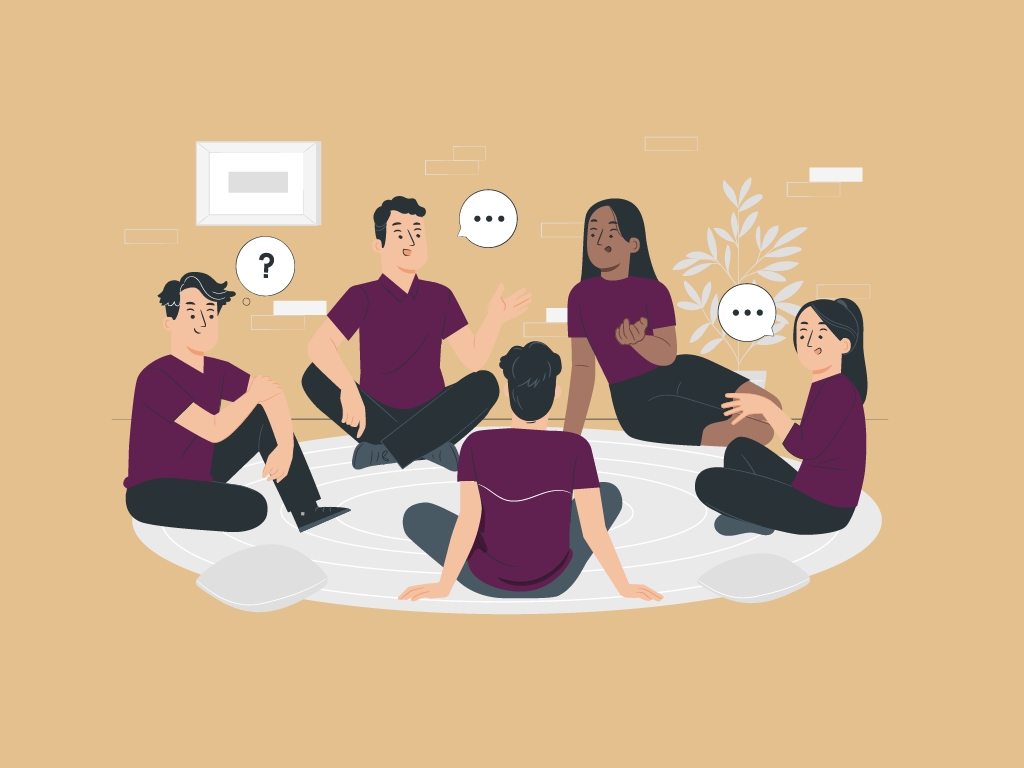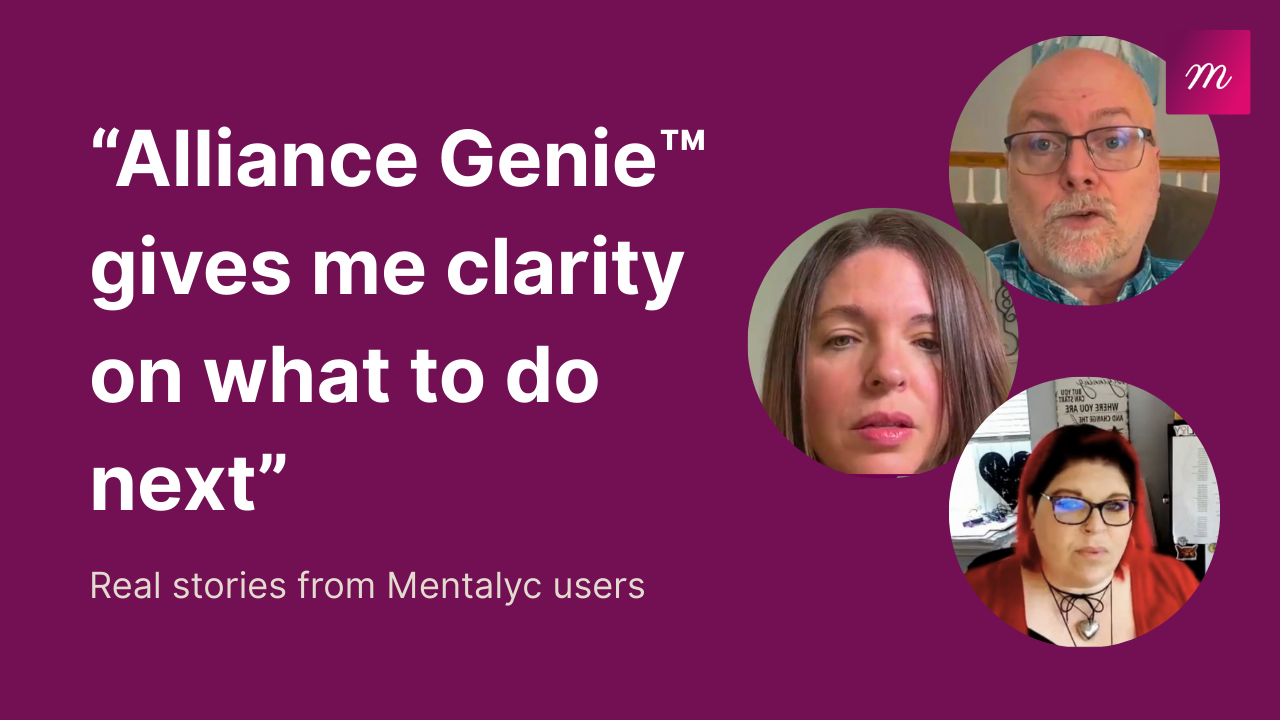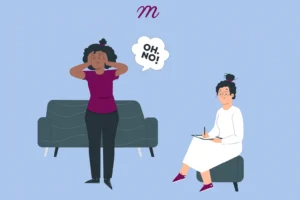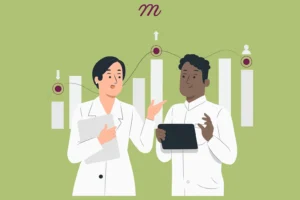Therapeutic alliance in group therapy is a complex web of relationships between the therapist and the clients, and the relationship amongst the group members themselves. It is more layered, more relational, and sometimes more fragile.
The therapeutic alliance, is the collaborative interaction & connection between the mental health professional and their clients. The bed of this relationship are trust, mutual respect, unconditional positive regard and shared goals.
Does Therapeutic Alliance Affect Group Therapy Outcomes?
Therapeutic alliance has been found to be one of the most consistent predictors of positive outcomes across therapy modalities. In group therapy, the alliance operates on multiple levels: between the therapist and each member, among members, and between each individual and the group as a unit.
Strong alliances correlate with lower dropout rates, greater satisfaction, and better therapeutic results. In a meta-analysis, group cohesion and therapist-member alliance both showed significant independent relationships with treatment success. Interestingly, these alliances mattered even more for clients considered at higher risk for poor outcomes early in treatment. This suggests that alliance isn’t just a “nice-to-have”—it’s potentially transformative.
Unique Dynamics of Group Therapy
Group therapy isn’t just individual therapy multiplied by six or eight people. It creates a unique relational field. Members bring in not only their own needs and goals but also their histories with others, their social roles, their defenses, and their hopes for connection. These elements start to play out in real time.
One of the most fascinating aspects is how quickly social roles can be enacted in the group, someone might take on the ‘rescuer,’ another the ‘joker,’ and another the ‘silent observer.’ These roles can both help and hinder alliance formation.
Members often care more about the overall quality of their relationships in the group than about formal roles (e.g., therapist vs. member). So, while the therapist is still crucial, what happens between members carries significant therapeutic weight.
Key Components of Therapeutic Alliance in Groups
While the classic Bordin model (goals, tasks, bond) still applies, group therapy adds a few wrinkles. Here’s what matters:
- Multi-directional bonding encompasses not just therapist-member relationships but the complex web of connections between all participants. In a depression support group, the alliance might manifest as Miguel feeling understood by the therapist, connected to Elena through shared parenting struggles, and supported by the group’s collective commitment to showing up each week despite their symptoms.
- Shared purpose development often takes longer than in individual therapy because multiple perspectives must be integrated. A group initially focused on anger management might evolve to address underlying grief, requiring renegotiation of both individual and collective goals.
- Cultural safety becomes paramount when members represent diverse backgrounds. A mixed-gender group addressing workplace stress recently confronted this challenge when two male members repeatedly interrupted female participants. The therapist’s intervention, implementing structured speaking turns and directly addressing the pattern, demonstrated commitment to creating space for all voices.
- Collective resilience emerges as groups develop their own culture of support. Members begin protecting and nurturing the group environment, often intervening when someone’s behavior threatens the collective safety.
- In a group with members from diverse racial, gender, or cultural backgrounds, the alliance is also built on cultural sensitivity. Members need to feel seen, not just symptomatically but socially.
Stages of Alliance Development in Group Therapy
Just like relationships in real life, therapeutic alliance in group therapy evolves. Rivera (1992) describes four stages that map onto what therapists often observe:
- Commitment: Members agree to be there and begin to invest emotionally. The initial commitment phase typically lasts 2-4 sessions, during which members assess safety and decide their level of investment. This period is characterized by politeness, surface-level sharing, and careful observation of group norms.
- Process: The process phase, where real therapeutic work begins, can be turbulent. A grief support group for example, experienced this when Jennifer angrily confronted Robert about his “positive attitude,” accusing him of minimizing others’ pain. Rather than avoiding the conflict, the skilled therapist helped the group explore how different grieving styles could coexist. This confrontation, while uncomfortable, actually strengthened the alliance by establishing that authentic emotions—including anger—were welcome.
- Change: Shifts in behavior, insight, or emotion happen. Members begin taking risks and supporting each other’s growth. For example – in an addiction recovery group, this could manifest when Rahul called David during a craving episode, not just seeking support but offering it by sharing his own strategies. These peer-to-peer interventions often prove more powerful than therapist interpretations.
- Termination: Members need time to process what they’ve gained from relationships that will end, often triggering grief responses that mirror their presenting issues. Members need to prepare to leave with new awareness and agency.
Building a strong alliance typically takes time—often several sessions. Some suggest that the early alliance is based more on perceived support, while later stages involve deeper collaboration. It’s in the process phase that most ruptures—and repairs—occur.
Challenges in Building and Maintaining Alliance
Group therapy is ripe for misattunements. Here are some common obstacles:
- Unequal participation: One member dominates while others withdraw. Group dynamics can quickly derail therapeutic progress when alliance issues aren’t addressed. Subgroup formation represents one frequent challenge—when two or three members form exclusive connections that exclude others.
- Power struggles between members can paralyze progress: Example – An eating disorder group struggled when two members competed over who had the “worst” symptoms, seeking validation through comparison rather than collaboration. The therapist’s intervention involved redirecting focus from individual pathology to shared recovery goals.
- Conflict between members: A disagreement can either strengthen the group (if resolved) or fracture it (if ignored). Example – A social anxiety group experienced this when three members began meeting for coffee between sessions, creating an “inner circle” that left others feeling rejected.
- Cultural insensitivity: A micro aggression, even if unintentional, can rupture the alliance quickly. Example – in a diverse trauma group, a white member’s suggestion that another participant “just move on” from racial discrimination deeply wounded the relationship fabric. The incident required several sessions to process, but ultimately strengthened the group’s commitment to cultural humility.
- Mismatched expectations create another common obstacle: When someone joins a depression group expecting advice and receives emotional processing instead, disappointment can spread throughout the group system.
- A poor alliance with one member can impact the entire group’s cohesion: Members often pick up on subtle cues, such as someone feeling dismissed or excluded, and it can affect their own sense of safety.
Strategies to Strengthen Therapeutic Alliance in Groups
Successful group therapists employ specific techniques to cultivate and maintain alliance. Transparency about process proves particularly effective, explaining what’s happening in group dynamics helps members feel more secure and engaged.
For instance – In a substance abuse group benefited when their therapist regularly “metacommunicated” about group process: “I notice we’ve all been very supportive of each other today, but no one has challenged anything anyone has said. What might that mean?” This transparency helped members understand their collective patterns and make conscious choices about engagement.
- Model vulnerability: When appropriate, small disclosures by the therapist can humanize them and reduce power distance. For example – When a therapist shared briefly about their own experience with panic attacks, it normalized the struggle while maintaining professional boundaries.
- Use feedback tools: Formal check-ins about group safety and progress. Weekly alliance ratings using simple scales (1-10) provide data while creating conversation opportunities. When ratings drop, the group can address issues before they become entrenched.
- Repair ruptures explicitly: Don’t sweep them under the rug. One example from a communication skills group involved a therapist acknowledging a past session where a Black woman’s airport security story was dismissed. The therapist modeled ownership, invited discussion, and helped repair trust.
- Foster shared goals: Even if individual goals differ, finding common themes (e.g., building confidence, managing emotions) creates a sense of unity.
- Normalize conflict: Let members know that disagreements aren’t failures, but opportunities for growth.
Measuring Therapeutic Alliance in Group Therapy
- Tools like the Group Session Rating Scale (GSRS) or the Working Alliance Inventory (WAI) have been adapted for groups. These allow therapists to gather feedback on:
Perceived trust and connection with the therapist, Connection with group members, Agreement on goals and tasks and Overall group climate.
More than just data collection, these tools can be springboards for conversation: “I noticed some of you marked low agreement on goals last week—can we talk about that?”
- Formal assessment tools provide valuable alliance data, but informal observation often reveals more nuanced information. Body language often communicates alliance status more accurately than verbal reports. Members leaning in, making eye contact, and positioning themselves toward the group center typically indicate strong connection. Conversely, chair-pushing, clock-watching, and phone-checking suggest alliance strain.
- Attendance patterns reveal alliance health. Consistent attendance usually reflects strong connection, while sporadic participation often indicates underlying relationship issues that merit exploration.
Therapeutic Alliance in Online Group Therapy
The rise of virtual groups has raised questions about alliance-building in digital spaces. Can you really form a bond over Zoom?
Surprisingly, yes—though with caveats. Online therapy reduces some barriers (like transportation or stigma) but can also reduce non-verbal communication and make it harder to pick up on emotional cues.
Strategies that help online:
- Clear structure and norms from the outset
- Use of breakout rooms for smaller pair discussions
- Actively inviting each member to speak
- Encouraging use of chat for quieter members
Digital fatigue is real, and engagement can drop quickly—so shorter, more focused sessions tend to be more effective.
Case Example
Let us think of a therapy group that had settled into a comfortable rhythm when a therapeutic rupture occurred. During one of the session, when Priya was sharing a lively story when Max interjected with a laugh, “You always have so many details, I get lost halfway through!” Other members laughed too, and the group moved on.
In the following weeks, Priya became noticeably quieter. Sensing the shift, the therapist, Laura, asked, “Priya, I’ve noticed you’ve been less talkative lately. Did something in a recent session make it harder to share?” Priya smiled faintly. “It’s not a big deal… I just felt a bit self-conscious after the comment about my storytelling. It made me wonder if I was annoying people.”
Laura responded, “Thanks for saying that. I appreciate the energy you bring. I wish I’d paused in that moment to check in.” Max added, “I didn’t mean it to sound critical. I’m sorry, Priya.”
The group used the moment to reflect on how humour can unintentionally hurt and how important it is to make space for different communication styles. The repair deepened trust and helped the group become more attuned to one another.
Final Thoughts
The therapeutic alliance in group therapy is rich, multilayered, and constantly evolving. While it may seem more complex than in individual therapy, it also offers more opportunities, for empathy, reflection, growth, and healing through human connection. As therapists, our role is not to control the group dynamic but to stay attuned to it, to name what’s happening, repair when needed, and model what authentic, respectful relating can look like. Whether in-person or online, group therapy done well becomes a microcosm for life, and a powerful place for transformation.
References
Lynch, E., Lynch, J., McClintick, K., Pippen, B., Womack, K., & Hinson, K. (2023). Perspective Chapter: Therapeutic Alliance, Rupture and Repair in Group Therapy. IntechOpen EBooks.
PGP. (2023). Ruptures and repairs of group therapy alliance. An untold story in psychotherapy research | Research in Psychotherapy: Psychopathology, Process and Outcome.
Therapeutic Alliance: Definition, Importance, How To Build, And Challenges. (2025, January 10). White Light Behavioral Health – Columbus.
Lynch, E., Lynch, J., McClintick, K., Pippen, B., Womack, K., & Hinson, K. (2023). Perspective Chapter: Therapeutic Alliance, Rupture and Repair in Group Therapy. IntechOpen EBooks.
Madeson, M. (2021). Therapeutic Relationships in Counseling: 4 Phases Explained. PositivePsychology.
Why other mental health professionals love Mentalyc

“Using Alliance Genie has really improved my notes … It tells me what I’m doing and gives me an approach of what’s next.”

“There is a lot more feedback and suggestions in it than before … that makes things a little bit easier for me.”

“It keeps me on a level of assessment about the relationship that has a little bit more objectivity … helps keep me grounded.”

“Reading transcripts helps me tighten up and come across more the way I want to present myself to clients … it’s helped me improve and keep getting better.”
Licensed Marriage and Family Therapist







